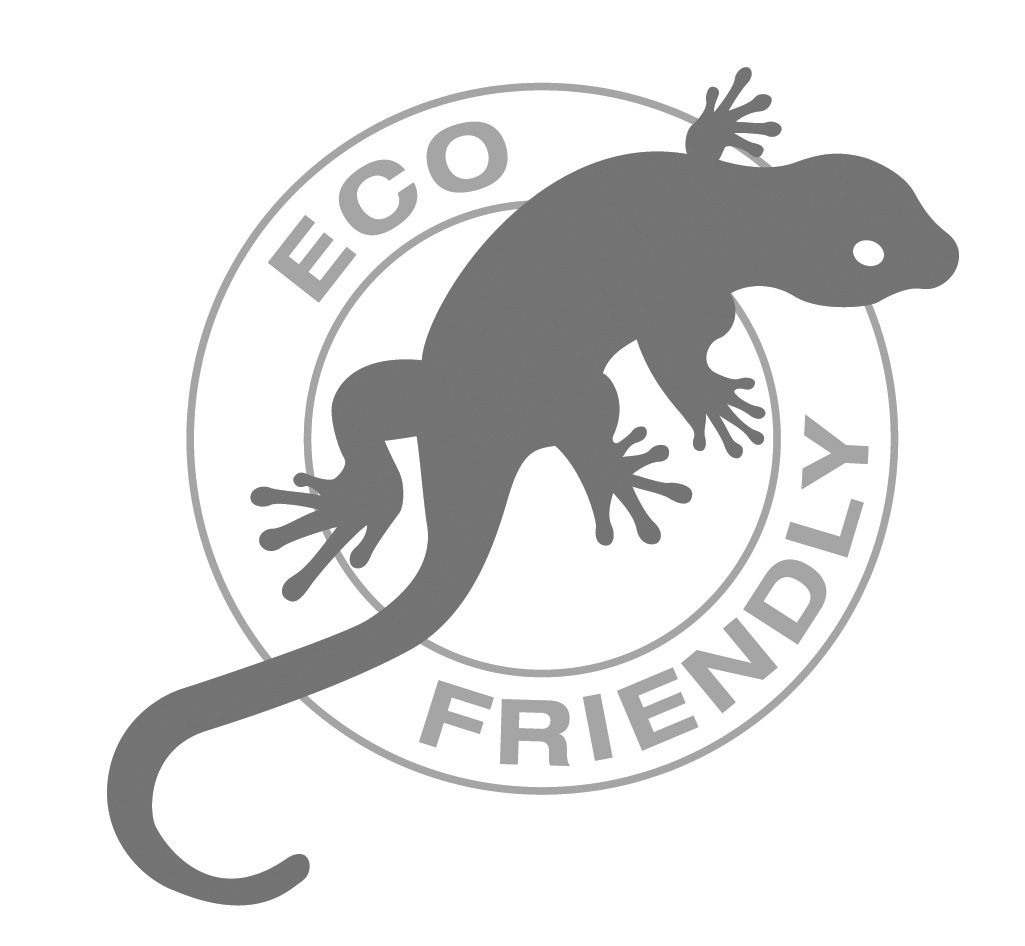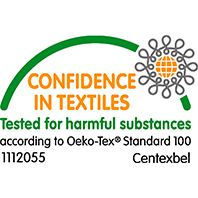The Global Organic Textile Standard (GOTS) is the worldwide leading textile processing standard for organic fibers, backed by independent certifications of the entire textile supply chain. The aim of the standard is to define requirements to ensure organic status of textiles; from the harvesting of raw materials, environmentally and socially responsible manufacturing, through labeling that provides a credible assurance to the end consumer.
The GOTS Organic Certification is accepted in all major markets, giving certified goods the assurance of global adherence and standardization with their organic standards.
Cotton production is a huge industry; it is integral to the economies of some of the poorest countries in the world and supports around 100 million rural families with employment and income.
However, there is a darker side to the hospitalisation and deaths of millions of cotton farmers around the world.
Cotton is dubbed the ‘world’s dirtiest crop.’ The World Health Organisation estimates that more than 250,000 people die every year due to pesticide poisoning, a large proportion of which are used on cotton crops. Pesticide poisoning is also thought to cause 3 million chronic health problems every year.
‘Almost 1 kilogram of hazardous pesticides is applied to every hectare of cotton plants. Between 1 and 3% of agricultural workers worldwide suffer from acute pesticide poisoning with at least 1 million requiring hospitalisation each year, according to a report prepared for the World Health Organisation. These figures equate to between 25-77 million agricultural workers worldwide.’ Cotton farmers are often more liberal with their spraying and regulations are more relaxed because the crop is not a food crop and won’t be eaten.
One of most affected areas is Punjab in India, where it was reported in 2011 that 923 grams per hectare of pesticides were used, almost twice the national average of 570 grams per hectare. The Malwa region is known as Punjab’s cotton belt and pesticide use here is reported to be unregulated and excessive. Over the years, this toxicity has built up and families living here often end up drinking and bathing in contaminated water, often sourced from canals where the industrial effluents are discharged with impunity.
As a result of the high levels of toxicity, large numbers of people in this area are suffering from cancer and other chronic illnesses and the hospitals are overwhelmed. The overnight train to Bikaner, in Rajasthan, which (although 325km away) is the nearest cancer hospital where treatment is free and medicines are cheap. Each night there are approximately 100 cancer patients on what’s called the ‘Cancer Train’, and the majority of these are small farmers from the cotton belt.
Humans aren’t the only animals that are affected by pesticide poisoning. A 1983 study conducted near Corpus Christi, Texas, found that a colony of breeding gulls were affected after they ate bugs poisoned by an insecticide designed to kill bollworms on a cotton field about three miles away. Around 200 adult gulls and 25% of the colony’s chicks died as a result. Similarly, in 1996 researchers looking into fish deaths in the USA concluded that the runoff from fields treated with the pesticide Endosulfan resulted in the death of more than 240,000 fish along a 25km stretch of an Alabama river.
One of the most common and little understood mechanisms of poisoning is through the skin. Cotton fabric may hold onto pesticide residues and other chemicals used in manufacturing processes and it is recommended to wash all new clothes prior to use. This is particularly important for baby and children’s clothes, as toxic chemicals may have a greater effect on a growing child.
Approximately 95% of the cotton seed market is dominated by agrochemical giant Monsanto. Bt cotton is genetically modified to include a bacterial gene from Bacillus thuringiensis (Bt) that causes the plants to produce a toxin poisonous to cotton pests such as bollworm. In theory, it is a very neat trick, and is designed so that pesticides are no longer required. Introduction of Bt cotton by Monsanto in 1996 massively decreased the use of pesticides in countries such as India and looked incredibly promising. In practice though, it isn’t that simple.
Bt cotton is very uniform in its growth and productivity, which is useful for farmers during normal conditions but means that the whole crop can be more susceptible during extreme conditions, such as drought. There are also reports of bollworm becoming tolerant to the Bt toxin, and its mass use has caused an increase in secondary pests such as aphids. This has resulted in overall pesticide use increasing again.
Roundup Ready Cotton (RR Cotton) is genetically modified (GM) cotton that has had its DNA altered to allow it to survive high concentrations of the herbicide glyphosate (the active ingredient in Monsanto's herbicide Roundup). It is sometimes referred to as "glyphosate tolerant" cotton. However, one concern with the heavy use of Roundup is that it will lead to the development of Roundup resistant weeds (sometimes referred to as "superweeds").
Traditionally, farmers would save seeds from the strongest, most productive plants so that, over time, their crops would improve. Crops would also evolve for their specific soil and climate conditions. However, GM seed types are F1 hybrids that need to be purchased every year, as trying to breed from the F1 plants gives poor quality seed for the next generation. And the GM crops only work well in combination with the specific pesticide that the crop is resistant to (also sold by the GM company). The additional expenditure - Bt cotton seed costs almost twice as much as standard - may cause farmers to go into debt and they become dependent on the GM company that they purchase from.
A study in 2006 showed that 65% of farmers in Punjab were in debt, with an even higher percentage in other regions of India, and 296,438 Indian farmers have committed suicide since 1995, often by drinking pesticides. It seems likely that this increase in debt and suicide is directly related to the introduction of Bt cotton.
Monsanto has been in the news a lot over the past few years. Glyphosate (in Roundup) acts on ‘pests’ by blocking an essential biochemical pathway. This pathway is not present in humans and it was originally thought to have no effect on us. However, it does affect our microbiome, and many users of Roundup have subsequently been diagnosed with cancer. Monsanto is accused of falsifying results in order to conceal the risk of cancer from consumers. The first legal battles against Monsanto have been won and there are thousands of cases yet to be heard.
Different crops require different nutrients from the soil and, if the same crops are planted again and again, the soil becomes deficient in those nutrients, giving poorer yields over time and eventually resulting in disease. Nitrogen and phosphorus are the two nutrients required by most crops and these levels will naturally decline with each growing season. However, there are some plants known as nitrogen-fixers, e.g. beans, peas and clover, that put nitrogen back into the soil.
Traditionally, farmers used crop rotation and would include one season of growing nitrogen-fixers to restore the soil. Manure and other composts are also a great way of adding nutrients. These traditional practices became mostly redundant upon the introduction of nitrogen based fertilisers.
The Haber process (or Haber-Bosch process) combines nitrogen from the air with hydrogen from natural gas, under high pressure and high temperatures, to form ammonia. This ammonia is the base for all artificial fertilisers and is used for the production of at least 40% of the world's food. It’s thought that half the nitrogen in our bodies originates from the Haber Process.
However, natural gas is a finite resource and the use of fossil fuels is not sustainable. The Haber Process produces roughly 450 million tons of ammonia every year and consumes 1-2% of the world’s annual energy supply in the form of natural gas. At this rate, we are set to run out of gas during this century, and without a viable alternative, this could potentially cause huge food shortages.
Excess fertiliser causes an overabundance of nutrients in the run-off that pollutes nearby water sources, which causes oxygen to become depleted in the water, resulting in the death of organisms such as fish. An overabundance of nitrogen in the soil can cause the release of the greenhouse gas nitrous oxide into the atmosphere. Although fertilisers aren’t the only source of nitrous oxide, they are a large contributor and nitrous oxide levels in the atmosphere are higher now than at any other time in the last 800,000 years.
Like most crops, cotton requires Nitrogen (N), Phosphate (P) and Potassium (K) and, to a lesser extent, Sulphur and Calcium. It also responds well to fertilisers containing the trace element Boron. Other trace elements required for cotton production include magnesium, manganese, copper and zinc. Cotton growers tend to grow cotton year on year as a monoculture and the soil becomes depleted in the elements that are not replaced.
Healthy soil is the Earth’s greatest active carbon sink, as carbon is locked into the soil, offsetting carbon emissions. ‘Regenerative Agriculture’ was developed by the Rodale Institute in the 1980’s and is currently gaining popularity. Regenerative agricultural practices are designed to optimise the ability of the soil to act as a carbon sink and include the rotation and diversification of crops, no use of pesticides or artificial fertilisers and, most crucially, as little disruption to the soil structure as possible.
The carbon is locked into the soil structure, until it’s disrupted by tilling and released again. Regenerative Agriculture uses a ‘No Dig’ method, also championed by organic gardener Charles Dowding, of adding manure or other nutrient rich matter to the surface to suppress weeds and encourage growth. This mimics nature by adding nutrients to the surface, which break down naturally and disturb the soil structure very little. Think of leaves falling in a forest and breaking down naturally on the forest floor.
A United Nations study suggests that regenerative agriculture could offset global carbon emissions by 10%, which is hugely promising. Patagonia has been working with their cotton growers to encourage these practices and plans to start selling cotton garments certified by the Regenerative Organic Alliance in early 2020. Organic cotton production emits up to 94% less greenhouse gas than non-organic and cotton grown using regenerative agriculture could actually remove more greenhouse gases than it creates. It’s a new and exciting development for sustainable clothing.
Millions of people, including many young children, die each year due to water-borne illnesses caused by inadequate sanitation and lack of water. Yet we still use a whopping 10,000 litres of water to grow and process just one kilogram of conventional cotton. It takes a jaw dropping average 2700 litres of water to create just one T-shirt.
One fifth of all the water used in cotton production is to dilute the pollution from factories during the extraction and processing of the cotton. Pesticide run-off from cotton fields also contaminates nearby water sources such as rivers, lakes and drinking water. In the developing world, there’s a huge problem with pesticide tanks being re-used to store water and food.
Organic cotton uses far less water to grow, since growers typically have healthier soils that act like a sponge, soaking up water during floods and holding it for longer in times of drought.
Organic farmers tend to grow a diversity of crops, use companion planting to discourage pests and improve soil condition, and use beneficial insects to control unwanted pests. This offers greater resilience for changes in weather and markets, as well as increasing biodiversity.
All cotton is imported as it cannot grow in the UK. To sell an organic cotton garment in the UK, it must meet the Organic Certification standards of the country it was grown in as well as the relevant EU regulations. The Global Organic Textile Standard (GOTS) is the most common certification in the UK and is also very comprehensive. Generally the land the cotton was grown on must have been free of pesticides for a minimum of three years.
Organic cotton will also be free of artificial fertilisers and the soil will be improved using natural methods. GOTS certification also goes further to ensure that the farmers, as well as the factory workers, receive a fair wage for their work.
GOTS certification also enables the labeling of cotton fibre from the organic conversion period, for example ‘100% organic cotton – in conversion’, meaning it was grown on land which has only recently been converted to organic methods (typically less than 2 or 3 years). Although no chemical pesticides and synthetic fertilisers are being used, residues may still be found in the soil. This conversion period is very difficult for farmers, who usually experience an initial drop in yield while not being able to obtain a premium organic price for their crops. Purchasing ‘organic cotton – in conversion’ is a great way to support farmers making the difficult transition to organic.





